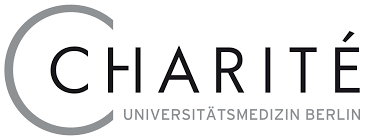
Institute of Microbiology, Infectious Diseases and Immunology
Role of the transcription factor c-Maf in controlling the development and function of RORgt+ type 3 innate lymphoid cells
Recently, it has become evident that innate lymphoid cells (ILCs), which represent a novel tissue-resident lymphocyte subfamily, contribute to multiple immune pathways by e.g. controlling host-microbiota interactions, potentiating adaptive immunity, and regulating tissue inflammation. Importantly, the function of ILCs also extends beyond classical immunology to metabolic homeostasis or tissue remodelling. Given this multi-facetted function, the identification of the molecular pathways governing ILC development and function is fundamental to better understand their biology as well as to develop novel strategies to manipulate these cells. In general, ILCs are divided into three subgroups based on their master transcription factor usage and cytokine‐producing capacity. These subsets include ILC1s, ILC2s and ILC3s. Type 3 innate lymphoid cells (ILC3s), which constitutively produce the cytokines IL-17 and IL-22, play key roles in the regulation of mucosal immunity and inflammation in the gastrointestinal tract. The transcription factor RORgt acts as a master regulator for ILC3s that critically controls their development and function. However, despite this fundamental role, the signals and molecular mechanisms that induce, control and maintain the expression of RORgt in ILC3s are poorly understood. Interestingly, we and others could recently identify the transcription factor c-Maf as a central regulator of adaptive RORgt+ type 3 immune cells. In detail, c-Maf was shown to directly bind and control the Rorc locus. Consequently, c-Maf-deficiency resulted in downregulation of RORgt expression in various RORgt+ T cell subsets. Importantly, our preliminary data demonstrate that c-Maf is also highly expressed by RORgt+ ILC3s. Thus, in accordance with the concept that ILCs and T cells share key transcriptional modules, we believe that c-Maf represents a central regulator of RORgt expressing cells in both the innate and adaptive immune compartment. Collectively, the aim of this project is to study the role of c-Maf for the development and function of ILC3s. By combining novel mouse models (e.g. conditional deletion of c-Maf in ILC3s) and molecular tools (e.g. c-Maf binding analysis) we will dissect the function of c-Maf and the underlying molecular circuits in different ILC3 subsets. Furthermore, we aim to identify the specific signals and mechanisms that regulate c-Maf expression in ILC3s. In addition, our preliminary data demonstrate the presence of a distinct c-Maf-expressing cell population among ILC progenitors in the bone marrow, suggesting that c-Maf also represents a novel regulator in early ILC3 development. Therefore, the role of c-Maf during ILC3 ontogeny will also be studied in detail. In summary, this project will enable us to identify novel regulatory mechanisms governing ILC3 development, homeostasis and function.